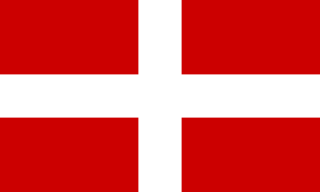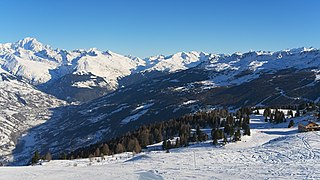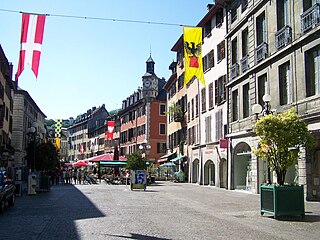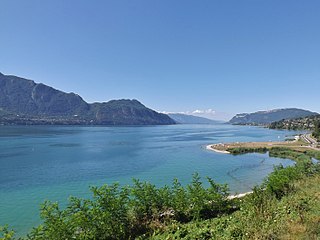
Savoy is a cultural-historical region in the Western Alps. Situated on the cultural boundary between Occitania and Piedmont, the area extends from Lake Geneva in the north to the Dauphiné in the south.
Amadeus III of Savoy was Count of Savoy and Maurienne from 1103 until his death. He was also known as a crusader.

Savoie is a department in the Auvergne-Rhône-Alpes region, Southeastern France. Located in the French Alps, its prefecture is Chambéry. In 2019, Savoie had a population of 436,434.

Aix-les-Bains, locally simply Aix, is a commune in the southeastern French department of Savoie.

Chambéry is the prefecture and largest city of the Savoie department in the Auvergne-Rhône-Alpes region of southeastern France. The population of the commune of Chambéry was 59,172 as of 2020, while the population of the Chambéry metropolitan area was 255,790. The city is located at the foot of the French Alps between Bauges and Chartreuse mountains, making Chambéry an important railway and highway crossroads.
Mont-Blanc[mɔ̃blɑ̃] was a department of the First French Empire. It was named after Mont Blanc, the highest mountain in Western Europe, which marks the border between France and Piedmont. It was formed in 1792, when the Savoy region, was occupied by the French. The department ceased to exist following Napoleon's defeat at Waterloo; the territory was restored to its former rulers.

Vin de Savoie is an Appellation d'Origine Contrôlée and Protected Designation of Origin for red and white wines in the Savoy wine region of France, which is located in the foothills of the Alps. The region is divided roughly into three distinct parts: the glacially sculpted terrain along the South shore of Lake Geneva, the hilly country near the northern end of Lac de Bourget, and the area bordering the Massif de Bauges South of Chambéry.

Lac du Bourget, also locally known as Lac Gris or Lac d'Aix, is a lake at the southernmost end of the Jura Mountains in the department of Savoie, France. It is the deepest lake located entirely within France, and either the largest or second largest after Lac de Grand-Lieu depending on season.

The arrondissement of Chambéry is an arrondissement of France in the Savoie department in the Auvergne-Rhône-Alpes region. It has 151 communes. Its population is 274,839 (2016), and its area is 1,586.1 km2 (612.4 sq mi).
The following is a list of the 19 cantons of the Savoie department, in France, following the French canton reorganisation which came into effect in March 2015:

Mouxy is a commune in the Savoie department in the Auvergne-Rhône-Alpes region in south-eastern France.
Conjux is a commune in the Savoie department in the Auvergne-Rhône-Alpes region in southeastern France. Since January 2017, the commune has formed part of the conurbation of Grand Lac, following the fusion of the former Communauté de communes de Chautagne into this larger agglomeration.

Italian irredentism in Savoy was the political movement among Savoyards promoting annexation to the Savoy dynasty's Kingdom of Italy. It was active from 1860 to World War II.

Amadeus III was the Count of Geneva from 1320 until his death. He ruled the Genevois, but not the city of Geneva proper, and it was during his time that the term "Genevois" came to be used as it is today. He was the eldest son and successor of William III and Agnes, daughter of Amadeus V of Savoy. He played a major rôle in the politics of the House of Savoy, serving consecutively as regent and president of the council, and also sitting on the feudal tribunal—one of three tribunals of the Audiences générales—of the Duchy of Aosta.
The Albanais is a small Savoyard region situated between Lake Annecy and Lac du Bourget, at the entrance to the Parc naturel régional du Massif des Bauges. Located in the French departments of Savoie and Haute-Savoie, its principal city is Rumilly. The name Albanais comes from the Latin Albinnum, which is derived from the names of the tribes Albii whose presence is attested to in the toponymy of places such as Albens, Alby, and Albigny.

The Château de La Bâtie-Seyssel is a castle in the commune of Barby in the Savoie département of France.
Marc-Claude de Buttet was a Renaissance poet, courtier and humanist. He formed part of the La Pléiade circle. He was lord of the feudal rent of Grésy in the province of Genevois.

The Château de Saint-Michel-de-Maurienne is a 13th-century castle in the commune of Saint-Michel-de-Maurienne Savoie département of France.
The history of Savoy presents a synthesis of the various periods, from prehistory to the present day, of the geographical and historical entity known as Savoy, a territory whose definition has varied over the course of historical periods, until it was defined by the two French departments of Savoie and Haute-Savoie.












